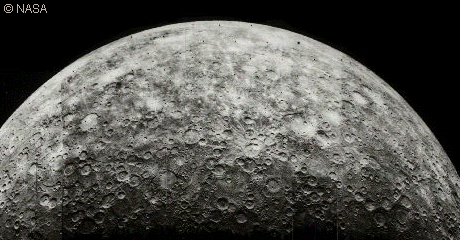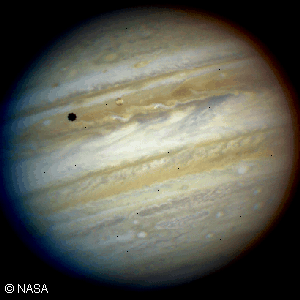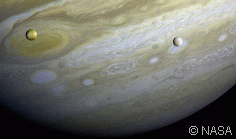More at 1 terameter
Mercury

This highly cratered body is the Sun's nearest neighbor, Mercury. Only about 45% of Mercury's surface has been photographed. Mariner 10 flew by Mercury three times in 1973 and 1974. Mercury rotates three times in two of its years and has a highly eccentric orbit. The result of these motions produces some strange effects for an observer on the surface. At some longitudes the observer would see the Sun rise and then gradually increase in apparent size as it slowly moved toward the zenith. At that point the Sun would stop, briefly reverse course, and stop again before resuming its path toward the horizon and decreasing in apparent size. All the while the stars would be moving three times faster across the sky. Mercury is slightly larger than our Moon, but smaller than Ganymede (Jupiter) and Titan (Saturn).
Jupiter

This picture captured the moon Io, and it's shadow, against the face of Jupiter. Amazingly, this photo was taken by the Hubble Telescope. Compare the quality of this picture with the next image taken by the Voyager spacecraft.

This Voyager photo includes two of Jupiter's moons -- Io and Europa. Io is the yellowish moon directly in front of the Great Red Spot. Europa is the slightly smaller moon on the right side of the picture.

This is another image of Jupiter as seen by the Voyager spacecraft. That blue and white ball next to Jupiter is an image of Earth at the same scale.
All four of Jupiter's large moons are close to the size of Earth's Moon. The Earth is about four times the size of these large moons.
  Copyright © 2016 by Bruce Bryson Copyright © 2016 by Bruce Bryson |